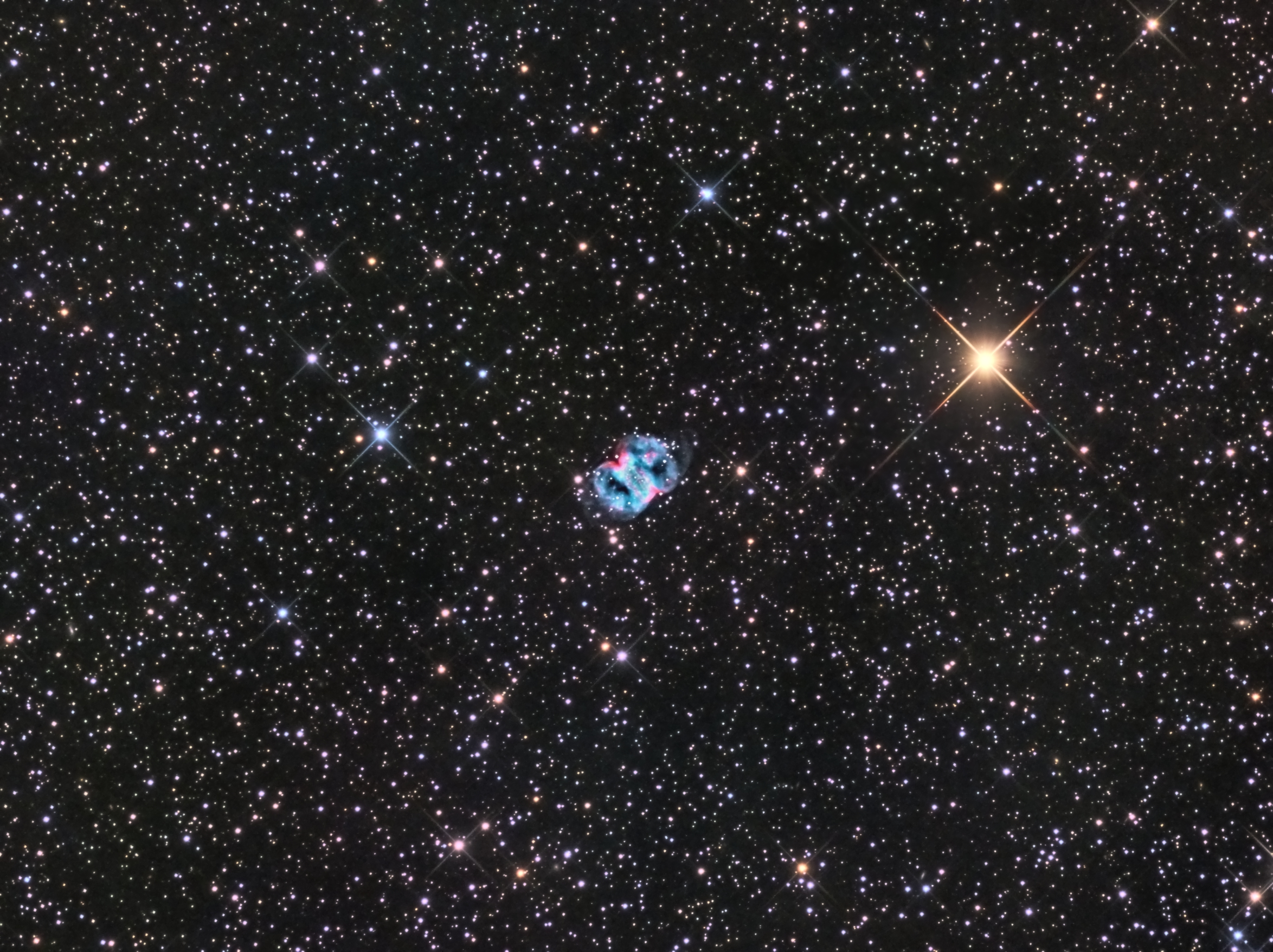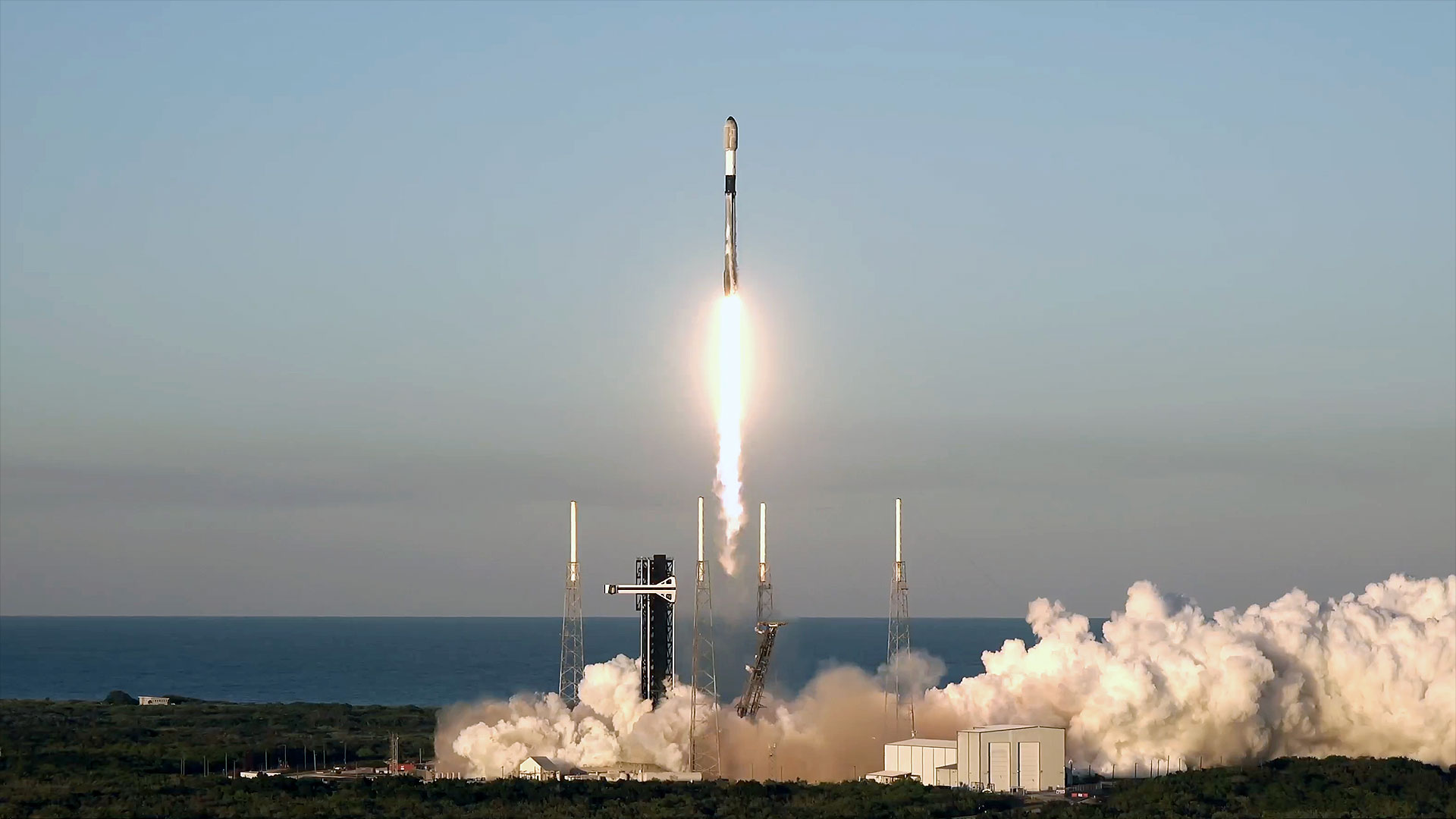Photographer Spies Little Dumbbell Nebula in a Sea of Stars

This little gem in a wide field of stars is the Little Dumbbell Nebula, the faintest object in the Messier catalogue.
Astrophotographer Ron Brecher took this image earlier this year from Guelph, Ontario.
"You can really get a sense of the vastness of space and the seemingly infinite number of stars out there," Brecher wrote in an email to Space.com.
The Little Dumbbell Nebula, or M76, is named after it's bigger, brighter neighbor, the Dumbbell Nebula. Located about 2.500 light-years away, the Little Dumbbell Nebula lies in the constellation Perseus. A light-year is the distance light travels in one year, or about 6 trillion miles (10 trillion kilometers).
Planetary nebula like these are caused by the cloud of dust around a central star blowing off into space, and is illuminated by radiation from the core. The red color is caused by Hydrogen accounts and mostly oxygen accounts for the blue-green.
"Stars at least 500 times fainter are scattered throughout this image, along with numerous faint and distant galaxies, each of them made of billions of stars," Brecher added.
Brecher used a SBIG STL-11000M camera with Baader LRGB filters, 10" f/6.8 ASA astrograph and Paramount MX to create this image. You can read more about on his website here.
Breaking space news, the latest updates on rocket launches, skywatching events and more!
You can see more amazing night sky photos by our readers in our astrophotography archive here.
Editor's note: If you have an amazing night sky photo you'd like to share with us and our news partners for a possible story or image gallery, send images and comments in to: spacephotos@space.com.
Follow us on Twitter @Spacedotcom. We're also on Facebook & Google+. Original story on Space.com.
Nina Sen is a freelance writer and producer who covered night sky photography and astronomy for Space.com. She began writing and producing content for Space.com in 2011 with a focus on story and image production, as well as amazing space photos captured by NASA telescopes and other missions. Her work also includes coverage of amazing images by astrophotographers that showcase the night sky's beauty.
